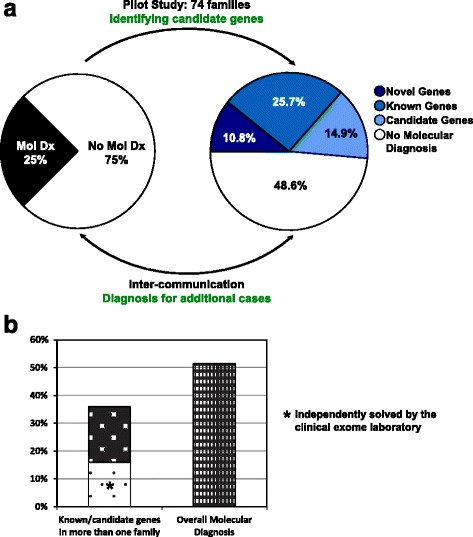Fig. 2.

Overview of the study design and results. a Clinical WES cases that lacked a definitive molecular diagnosis (left) were eligible for recruitment into a research environment. In a pilot study of 74 families (right), we identified strong candidate genes for 51% (38/74) of cases. Identified variants were categorized into six major classes based on mode of inheritance and known or novel gene. b According to stringent criteria, a potential contributory variant was achieved in 27 of 74 (36%) cases. Of these, 12 were independently solved by the clinical exome laboratory upon reanalysis of WES data and updated literature review. When taking into account strong candidate genes identified in only a single family to date, a potential molecular diagnostic rate of 51% was achieved
